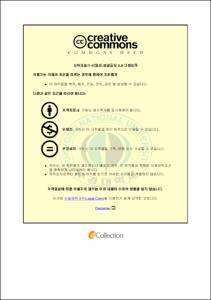東北아시아의 銅鍑연구
- Abstract
- In the term defined within the dictionary, 'Dongbok (Korean term)' means a bronze cauldron which is made of bronze. In order to understand the bronze cauldron more insightful, there are certain features of the cauldron. Firstly, it is made of bronze with wide mouth and one pair of handles, shaped semicircle or square, is attached near the entrance of the cauldron. The cylindrical or globular body is maintained by roundish or flat bottom with trumpet-shaped or tripodal feet. Bottom without feet less appealed in this area.
Bronze cauldron was mainly used by the Northern nomadic horse-riding people who resident in the broad grassland from North-Easthern Asia and southern Siberia to eastern Europe for their everyday life or ritual ceremony. It is more comprehensible to divide them into three different usages; cooking, dairy farming and ritual ceremony. The most important purpose of the cauldron, however, is the ritual ceremony above all.
The distribution areas are as such; In the eastern area, from the west region of Amur River(China) and the east-southern region of Da Hinggan Ling Range to Mongolia Plateau and central Asia to the western region of the Black Sea(East Europe) and Rumania, Hungary alongside with the Danube River. In the northern area, the cauldron was used in the upper region of the Yenisey River and the Rena River(Siberia). In the southern area, it reached from the upper and middle region of the Yangtze River(China) to the Gimhae area(Korea). The zonary location of the bronze cauldron found from all around the continental shows its broad distribution.
There are two different types in the bronze cauldron when it comes to analyse its typology and main usage agents(ethnic background). One type is initially employed in the East Europe and Siberia which could be named a 'Eurasian Cauldron' (name was given by the researcher). Another is an 'North-East Asia Cauldron' (also named by the researcher), including Ordos cauldron of the northern part of China, Xiong_nu cauldron of the Mongol area, Seonbi cauldron of the north_east part of china and Korean cauldron. In terms of each physical feature, Eurasian Cauldron contains superb decoration splendidly while North_East Asia Cauldron is simple and practical. The researcher tried to analyse this North_East Asia Cauldron into A, B, C according to its types.
Most of bronze cauldrons found from Korea showed flat bottom and the handles are loop-shaped. Also most of them contain straight handles on the mouth of couldron. It is very important to point out that most of the bronze or iron cauldrons found from Korea Peninsula showed similar features.
The period of usages varies. In case of the iron and bronze cauldrons discovered from the areas of North Korea(Goguryeo region) reached to the BC 2nd or 1st centuries. The latest excavation which uncovered the cauldrons in the Gaya tombs of Gyeongnam region is appealed that the cauldrons belonged to AD 3-4th century.
Production and making evidence of the cauldrons in Korea has not yet confirmed. Then it is possible to believe that cauldrons found from Korea with certain features of the north_eastern China could be understood as the influence from Buyeo and Seonbi cauldrons. Insightful conclusion can be drawn further by the researcher; it is highly likely that Seonbi groups could migrate to the Baekje region and Silla, Gaya regions with their portable bronze cauldrons. Furthermore, some Buyeo people might have moved to the northern part of Korea where was Goguryeo at that time and they brought their cauldrons into Korean Peninsula.
- Issued Date
- 2011
- Awarded Date
- 2011. 8
- Type
- Dissertation
- Publisher
- 부경대학교
- Department
- 대학원 사학과
- Advisor
- 강인욱
- Table Of Contents
- Abstract
제1장 서론 ·····························································1
제2장 銅鍑의 명칭과 용도 ········································5
제1절 명칭과 용도 ···············································5
제2절 분포지역과 사용주체 ··································15
제3절 硏究史的 檢討 ···········································22
1. 유라시아형 동복 연구사 ·······························24
2. 동북아형 동복 연구사 ······························· 33
제3장 형식 분류와 편년 ······································43
제1절 기존 형식안의 재검토 ································43
제2절 형식 분류와 편년 ······································54
제4장 한국 銅鍑과 비교 ······································ 58
제1절 한반도 출토 동복 사례 ····························· 58
제2절 한반도와 동북아시아동복의 비교검토 ···········65
제5장 결론 ·························································83
【참고문헌】
- Degree
- Master
- Files in This Item:
-
-
Download
 東北아시아의 銅鍑연구.pdf
기타 데이터 / 13.62 MB / Adobe PDF
東北아시아의 銅鍑연구.pdf
기타 데이터 / 13.62 MB / Adobe PDF
-
Items in Repository are protected by copyright, with all rights reserved, unless otherwise indicated.